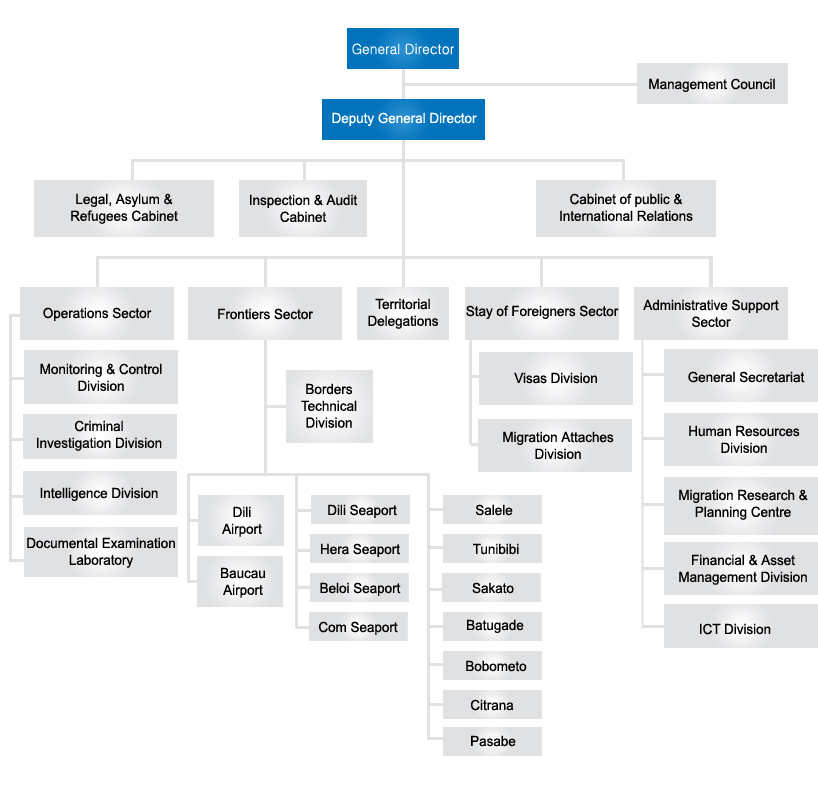One of the newest Immigration Services in the world, the Immigration Service of the Democratic Republic of Timor-Leste (Serviço de Migração) was established in its current form in early 2003 as a Department of the Timor-Leste National Police (PNTL). In August 2008, it assumed its current name and became a separate Service in its own right within the Ministry of Defense and Security with the promulgation of the Ministry’s organic structure decree law 31/2008.
The Service has over ninety three(93) staffs, and is responsible for civilian immigration control functions at all land border crossing points, airports and ports. The Service decides visas that may be granted on arrival at a border crossing, and processes applications for further visas that may be granted to people after arrival in Timor Leste in conjunction with the Consular Affairs Department of the Ministry of Foreign Affairs. The Service is also responsible for administering other functions of the Immigration and Asylum Law of 2003 (LIA), including registration of foreigners and legislated enforcement powers according to its Organic Law 30-2009.
Organizational Chart

 EN
EN PT
PT TL
TL KO
KO


 Ministry of Justice
Ministry of Justice Courts of Timor-Leste
Courts of Timor-Leste Government Results Portal
Government Results Portal Timor-Leste KOICA
Timor-Leste KOICA 

